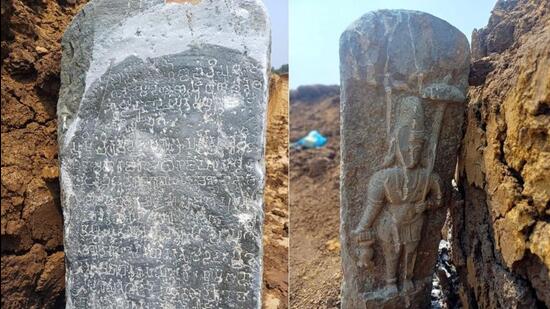Karnataka’s Davangere district unveiled a vital archaeological discovery through the unearthing of a 7th-century stone inscription delivering information about Badami Chalukya dynasty ruler Vikramaditya I’s governance system and social structure.
Archaeologists discovered the historical writing during soil excavation operations at Madapura Lake in Nyamati taluk when residents used heavy machinery for their work. Experts validated this text which spans 17 lines in Old Kannada language and amounts to nearly five feet in length by dating it between 654–681 AD within Vikramaditya I’s rule.
Department of Archaeology, Museums and Heritage officials state that the inscription outlines important administrative measures used during that period. Hidden within the Chalukyan documents is the name of Singhavenna as an administrative officer who managed Ballavi. Through the written record Singhavenna demonstrated the royal power to forgive taxes for residents which shows that the area experienced welfare-minded administration in that period. The writing documents how the lake builders received six acres of land through charitable donation which reinforces the significance of water resource development among local communities.
The stone details that ownership of this territory belonged to 77 families during the time period stretching a millennium back. Ballavi functions as a centralized administrative unit having about 70 local communities under its control which stands as evidence of orderly regional governance.
Archaeological evidence reveals that the inscription contains 17th century partly-carved relief sculptures on both its front and back surfaces thereby indicating continued cultural or religious importance of the slab through centuries since its original function.
The discovery reveals more than historical value since it demonstrates both the social values and complex administration systems that existed during the early medieval era. The ongoing evaluation of the inscription will lead to improved understanding of Karnataka’s historical past while preserving insights about the Chalukyan dynasty’s eternal influence.



